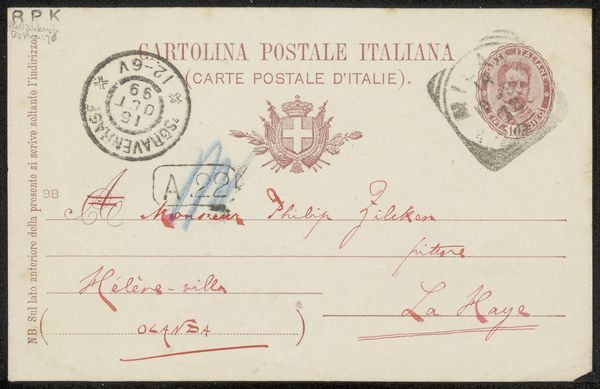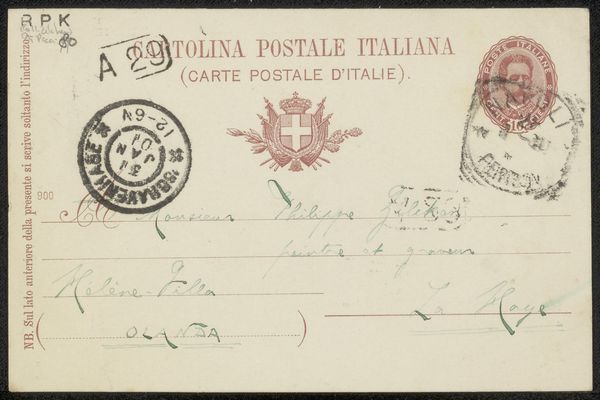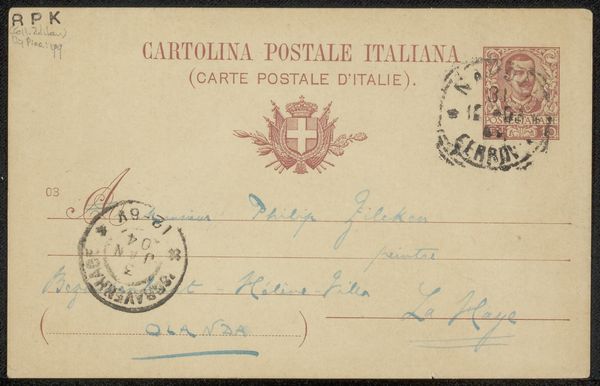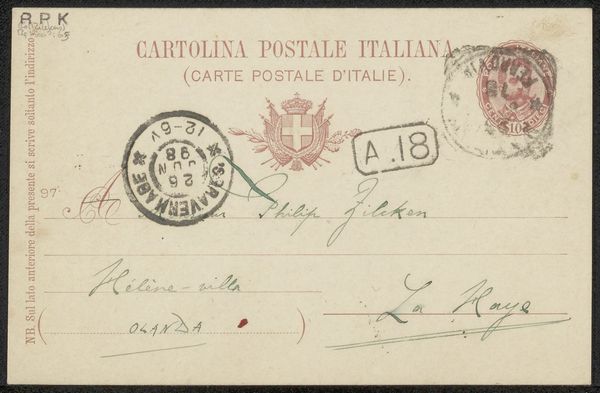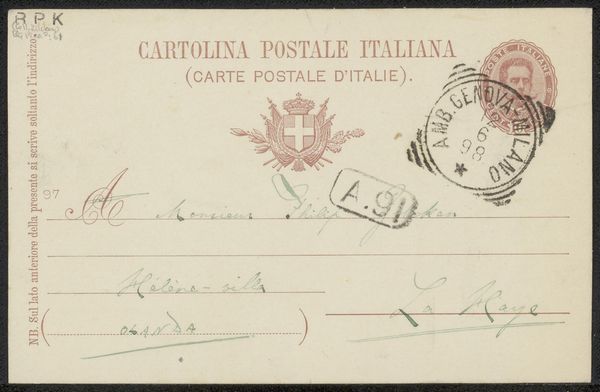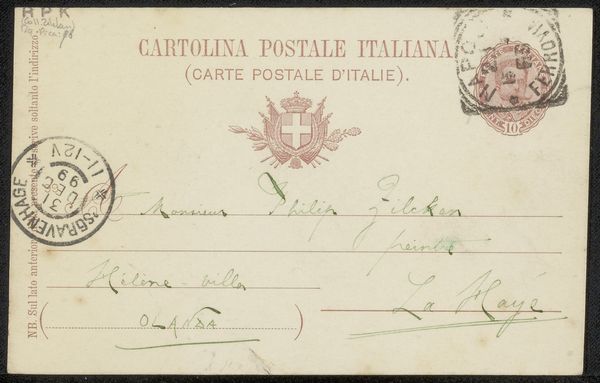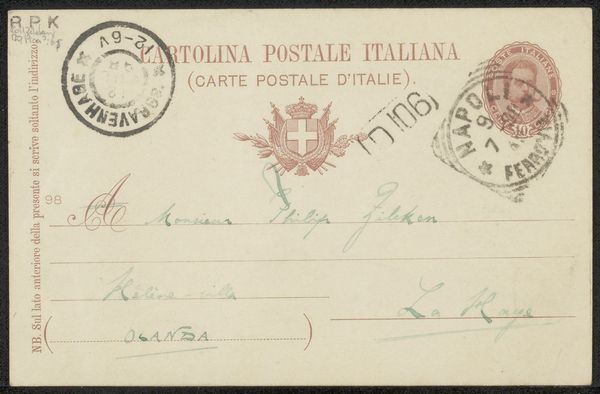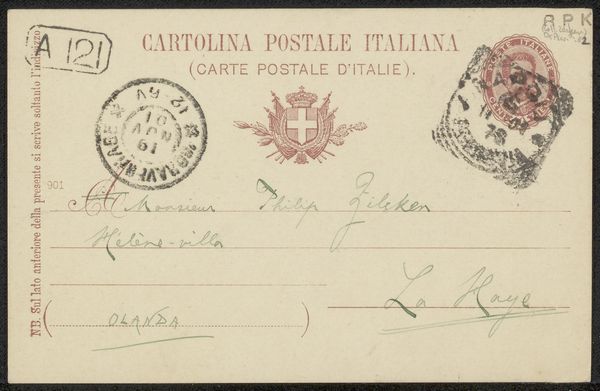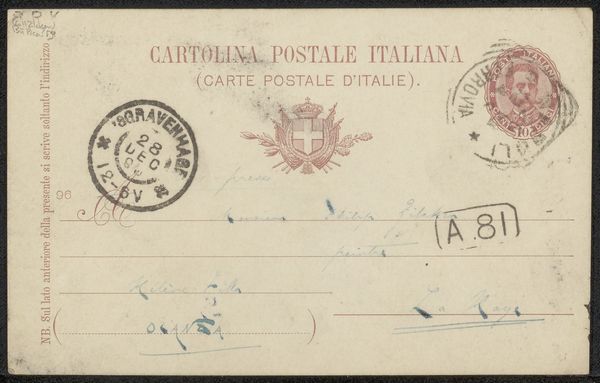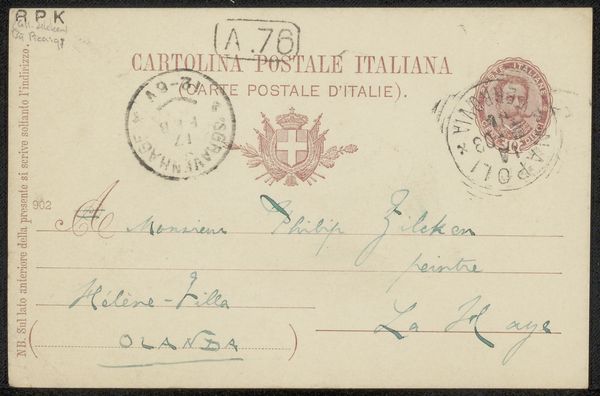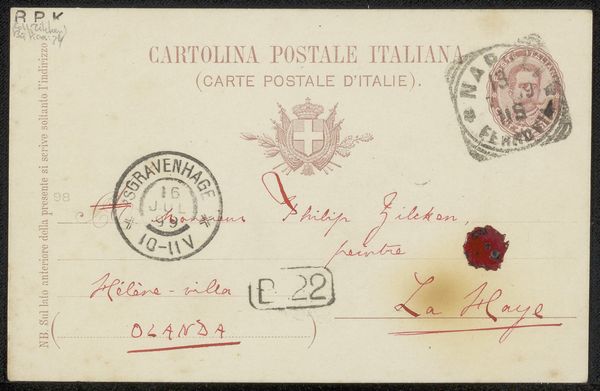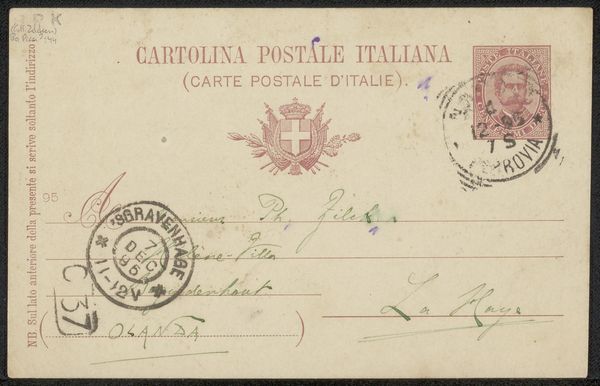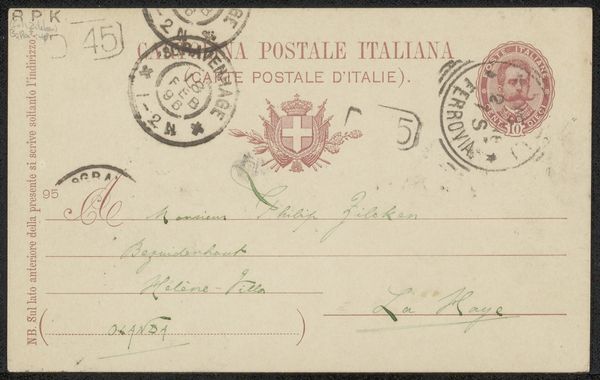
drawing, collage, paper, ink
#
drawing
#
collage
#
paper
#
ink
Copyright: Rijks Museum: Open Domain
Curator: Take a look at this humble but revealing artifact: a postcard addressed to Philip Zilcken, likely penned in 1905, its author is unknown, rendered with ink on paper, part drawing, part collage. Editor: Well, that feels oddly intimate, doesn’t it? It's like stumbling upon a secret whispered between two artists. There's an aged grace to it, the way the ink has settled into the paper. You sense the hand behind it. Curator: Indeed! I see it as a time capsule of sorts. It gives an insight into how artists communicated back then. Simple. Elegant. I find it remarkable how much information is embedded into what may seem a very ephemeral item. Editor: What strikes me is its function. It is not "just" art, but about getting someone *to* art. What does the business side of creativity enable, require, even? What kind of "Esposizione" could Zilcken, described here as "pittore" attend in Venice, presumably. Was Zilcken dependent upon commissions? It tells us something very specific about how art functioned as material and as social fact. Curator: And how easily that fades! Now this almost lost note has reappeared—is being, to a certain extent, resurrected! I imagine the Italian sun shining on the canals, maybe the sounds of music carried across the water. Just pure speculation and artistic free-association, naturally. Editor: I prefer to dwell on the here-and-now. It seems more "accurate," perhaps. Someone made it, posted it. Its material components: the ink, the paper stock... I find a kind of real story residing in their coming together. It had to get from A to B, and fulfill its purpose. So much labor implied by a tiny rectangle of paper and its almost imperceptible collage element. Curator: But don't you see, the traces of that making, that intent—they still breathe within the work! I find such freedom in thinking of art in this manner! So that the work has almost an occult life that survives the life that the maker had when constructing it. Editor: I will say, focusing on the materiality, the context surrounding such ephemera does provide tangible means by which we can see the forces around making as well as appreciate the labor. Thanks for making the small tangible. Curator: And thanks to you for giving us all a bit of perspective of just how it was made in its era.
Comments
No comments
Be the first to comment and join the conversation on the ultimate creative platform.
